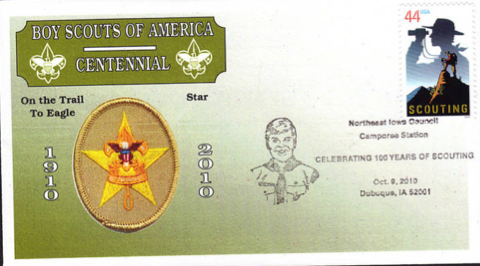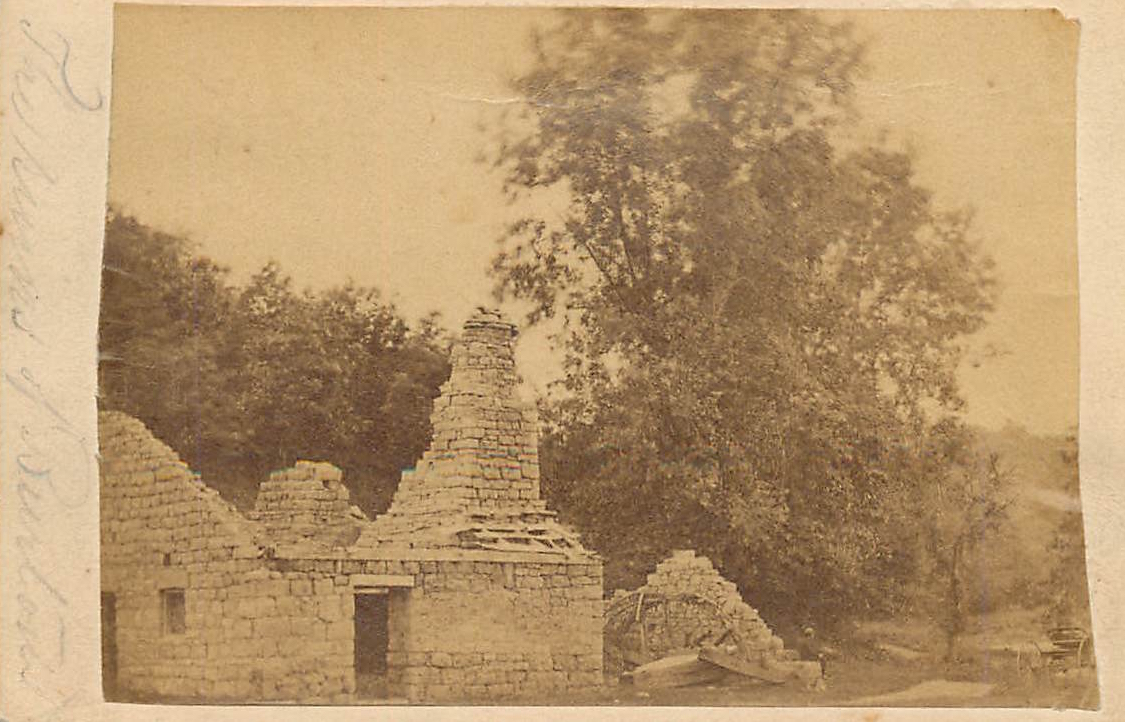Encyclopedia Dubuque
"Encyclopedia Dubuque is the online authority for all things Dubuque, written by the people who know the city best.”
Marshall Cohen—researcher and producer, CNN
Affiliated with the Local History Network of the State Historical Society of Iowa, and the Iowa Museum Association.
BOY SCOUTS
BOY SCOUTS. Dubuque's first two troops of Scouts were organized soon after the arrival of a representative from the national office in August 1910. Due to lack of cooperation and interest, these troops gradually disbanded. (1)
The next troop was organized in 1912 by SUMMIT CONGREGATIONAL UNITED CHURCH OF CHRIST. One of the boys who joined that troop was Milt Blosch who, in 1997, was honored for his 75 year involvement with scouting with a pin from the national organization. At the time, he was one of only 84 people in the country to have had that many years in the organization. (2)
Interest was revived in 1916 when local businessmen organized by Henry WILBERDING and a Scout executive, Walter Gunn was hired. Fired with enthusiasm, Gunn organized troop after troop so that by 1919 Dubuque had 525 registered Scouts. (3) In 1928 Boy Scout troops were found at AUDUBON ELEMENTARY SCHOOL (Troop 9), HOLY TRINITY CATHOLIC CHURCH (Troop 16). (4) In 1928 there were eleven active troops: SUMMIT CONGREGATIONAL UNITED CHURCH OF CHRIST (Troop 1), WESTMINSTER PRESBYTERIAN CHURCH (Troop 4), ST. PATRICK'S CATHOLIC CHURCH (Troop 6), FIRST CONGREGATIONAL UNITED CHURCH OF CHRIST (Troop 7), YOUNG MEN'S CHRISTIAN ASSOCIATION (Y.M.C.A.) (Troop 12), [[IMMANUEL CONGREGATION UNITED CHURCH OF CHRIST (Troop (3), THIRD PRESBYTERIAN CHURCH (Troop 9), HOLY GHOST CATHOLIC CHURCH (Troop 20), ST. LUKE'S UNITED METHODIST CHURCH (Troop 5), ST. MARY'S CATHOLIC CHURCH (Troop 8), WASHINGTON JUNIOR HIGH SCHOOL (Troop 19), UNIVERSITY OF DUBUQUE (Troop 15), ST. MARY'S ORPHAN HOME (TROOP 11), NATIVITY CHURCH (Troop 10), and FIRST PRESBYTERIAN CHURCH, (Troop 13). (5)
In 1930 financial security came to scouting when it became part of the Community Chest collection. Local scouts also benefited by the donation of a rugged and heavily wooded campsite south of Durango from the Wallis family. (6)
A lasting memorial to his [John Burton's] name was created in 1929, when Camp John Burton was dedicated as a Scout Camp. The land for this purpose, some 26 acres, was given by James Harold Wallis and John Rider Wallis, both grandsons of John Burton, whose daughter [Mary Burton] had married a Wallis [John William Wallis]. (7)
The smelting furnace was located just
south of the present [in 1973] red
bridge at Durango- immediately behind
the stone structure was a very steep hill.
As a young boy my great uncle, Jos. Herod,
showed me the remains of a stone flume or
chimney built on the hill side and connected
with the chimney of the smelter - an ingenious
way of increasing the draft to carry the smoke
and fumes without building a high vertical chimney. (8)
In 1921 Lynn Osborne became the first Dubuque Council scout to earn the Eagle Scout designation, the highest rank a Scout can earn. (9) Janet VANCE later became the first woman in Iowa to be inducted into the Brotherhood of the Arrow.
In 1928 with a financial debt lingering from the year before, Harold H. Baker, the new scout executive locally, and A. C. Buettell, the head of the Boy Scout Council Finance Committee and and chairman of the Budget Fund Campaign took an appeal to the city. Their efforts were focused on raising $6,500. (10) Locally, a new scout council was chosen from members of civic, fraternal and patriotic organizations. Plans were made for establishing a permanent scout camp with permanent shelter and equipment. (11)
In 1948 the Northeast Iowa Council of the Boy Scouts of America made the decision to sell the Wiegand property given to it years before. The Weigands had hoped that the land would be left in its natural state, but at the time of the gift the Council stated it would not accept the gift if there were restricts on its use. The Scouts were not organized to hold property and did not have the funds to develop it. No restrictions were contained in the deed. With the feeling that the Wiegands had intended to help the scouting program and had not meant to restrict that help to only the local area, the Northeast Iowa Council sold the property. The proceeds were set aside as the 'Wiegand Camp Fund' to acquire and improve or to improve and already acquired tract of land for a permanent camp. (12)
In 1960 the Junior Chamber of Commerce and Scoutmaster Don Hesseling and two assistants organized Troop 67 exclusively for the handicapped. It was the first troop of its kind in the Northeast Iowa Council. (13)
---
Source:
1. "How Scouts Grew in Dubuque," Telegraph Herald, January 31, 1960, p. 5
2. Bragg, Mary Rae. "Boyhood Funs Becomes a Scout's Honor," Telegraph Herald, May 13, 1997, p. 1. Online: https://news.google.com/newspapers?nid=aEyKTaVlRPYC&dat=19970513&printsec=frontpage&hl=en
3. "How Scouts Grew..."
4. "Scout Executive Inspects Troops," Telegraph Herald, April 6, 1921, p. 3
5. "Eleven Troops of Scouts Active Now," Telegraph Herald, April 22, 1928, p. 22
6. "How Scouts Grew..."
7. Wallis, John Rider. Platt Smith 1813-1882 A Brief Biography; Notes From the Bonson Diary 1840-1854; Rambles Thru Linwood, History in a Graveyard, 1973
8. Ibid.
9. Ibid.
10. "Scout Movement on New Basis Here," Telegraph Herald, April 22, 1928, p. 22
11. "Loizeaux is Head of Scout Council," Telegraph Herald, April 22, 1928, p. 22
12. Scouts Explain McGregor Sale," Telegraph Herald, November 3, 1948, p. 6
13. "Form Special Scout Troop for Physically Handicapped," Telegraph Herald, March 27, 1960, p. 28
Special appreciation to Andrea Wallis Aven.




